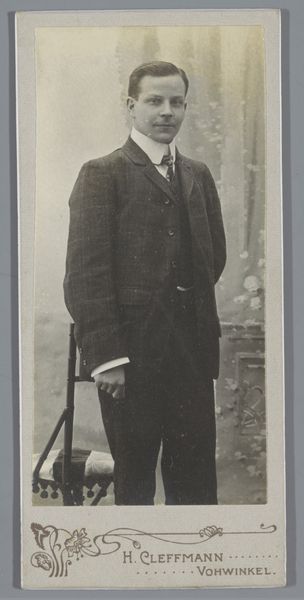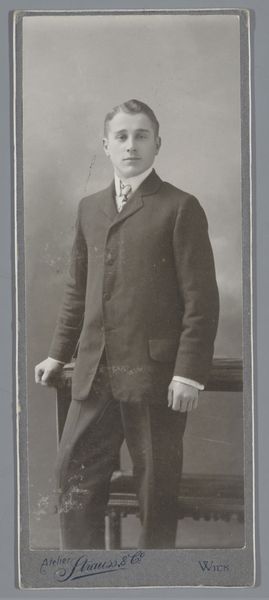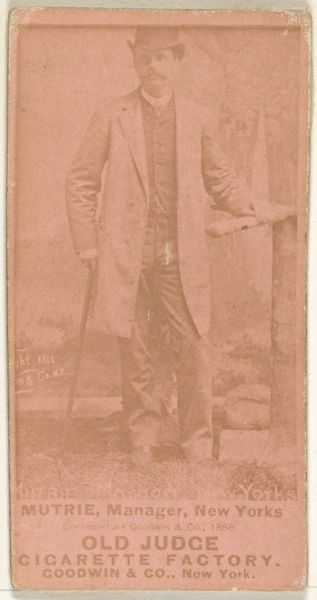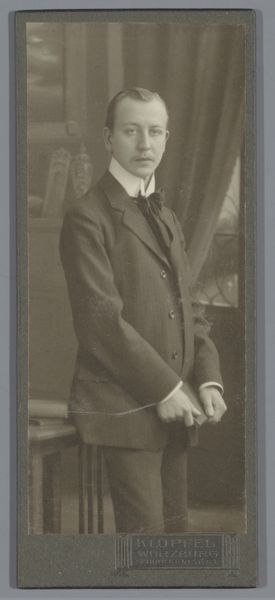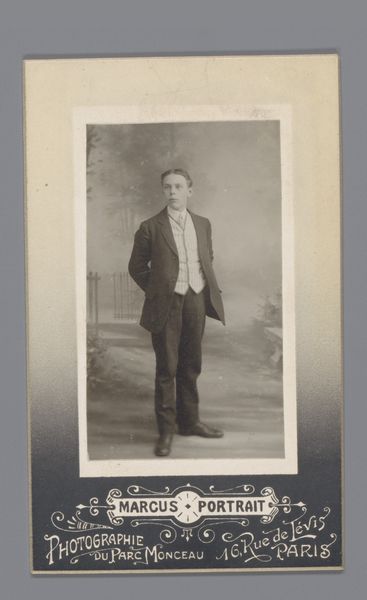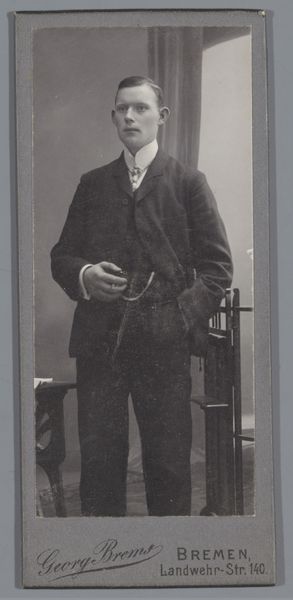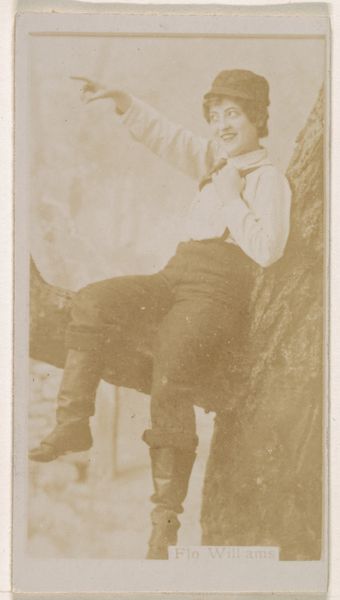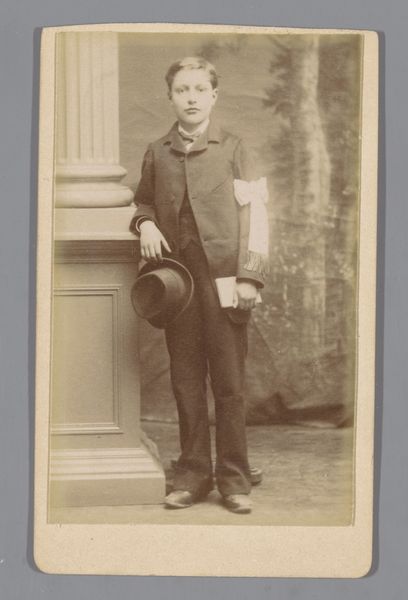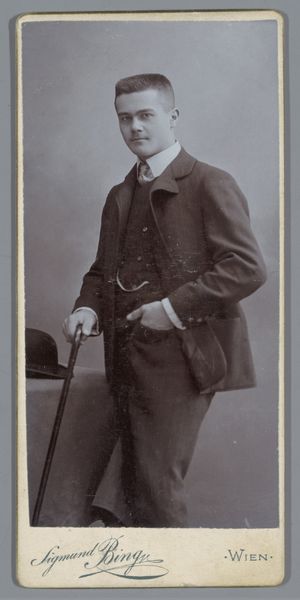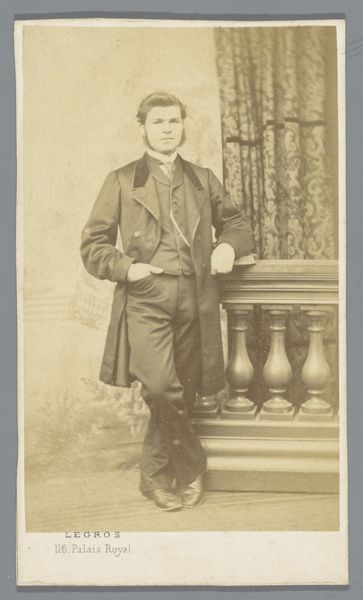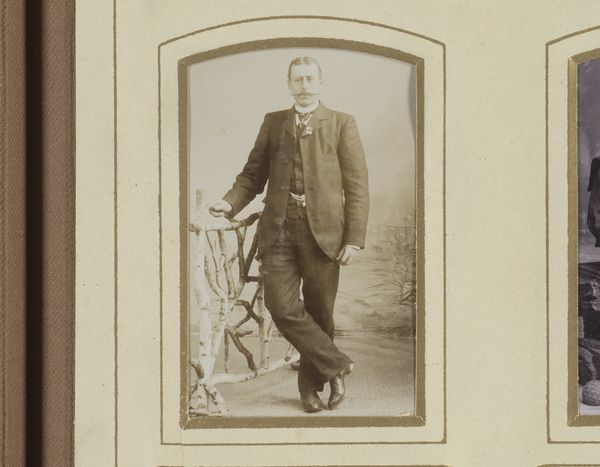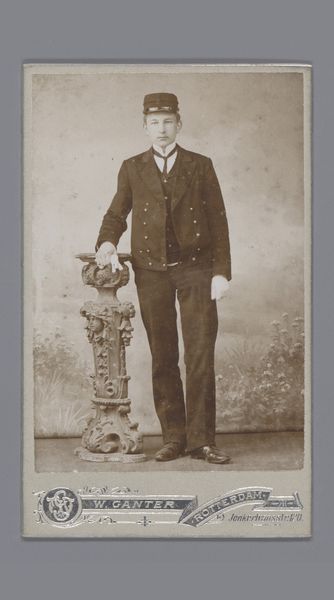
photography, gelatin-silver-print
#
portrait
#
photography
#
historical fashion
#
framed image
#
gelatin-silver-print
#
monochrome
Dimensions: height 120 mm, width 50 mm
Copyright: Rijks Museum: Open Domain
Curator: Here we have a gelatin-silver print entitled "Portret van een onbekende man," or Portrait of an Unknown Man, dating roughly between 1900 and 1914, credited to Theodor Liebert. The monochrome tonality lends the piece a timeless, almost spectral quality. Editor: It has this somber feeling, doesn't it? The subject seems caught between formality and unease. I am fascinated by how this very ordinary man wanted to project an image. What could a photograph mean in those days? It makes you wonder about the societal pressures he faced. Curator: Precisely. The materials and processes tell a story of democratization. Gelatin-silver printing allowed for relatively mass production, making portraiture more accessible. Who was Liebert, the photographer? Were they working to create aspirational images for the upwardly mobile? Considering the labor that would have been involved for the final product is worth considering here, don’t you think? The studio, the chemicals, and all that goes into the set up, which here includes neoclassical references: this whole apparatus creates the portrayed’s image. Editor: The composition, with the man leaning against that oddly angled table, speaks volumes. I can imagine him having to physically restrain himself for a clear shot during a long exposure time. What stories do you think were they attempting to present and tell through their bodies? Also, I wonder who this photo was for. Was it a personal memento, an attempt to solidify one's place in society? What social performances, what type of consumption did photographs imply and propel in society during this period? Curator: It prompts questions about the power dynamics inherent in early photographic portraiture. Did the subject control the image or the photographer? Were there shared cultural tropes they relied on to make these images effective, relatable? The use of the studio set tells as much as the clothes they are wearing. The sitter’s identity, or lack of known identity rather, leaves it to further questioning about that power: he disappears, while the photographer signs his product for commercial purposes, I guess. Editor: Definitely a rich vein to tap in regard of historical photography's role in shaping self-perception and constructing identity. Thank you for these material-centered remarks. I can already imagine an excellent analysis through those lenses. Curator: My pleasure, It is fascinating how studying material can trigger contextual approaches.
Comments
No comments
Be the first to comment and join the conversation on the ultimate creative platform.

